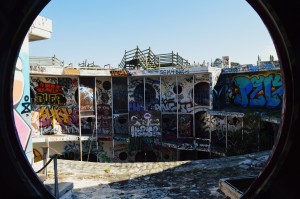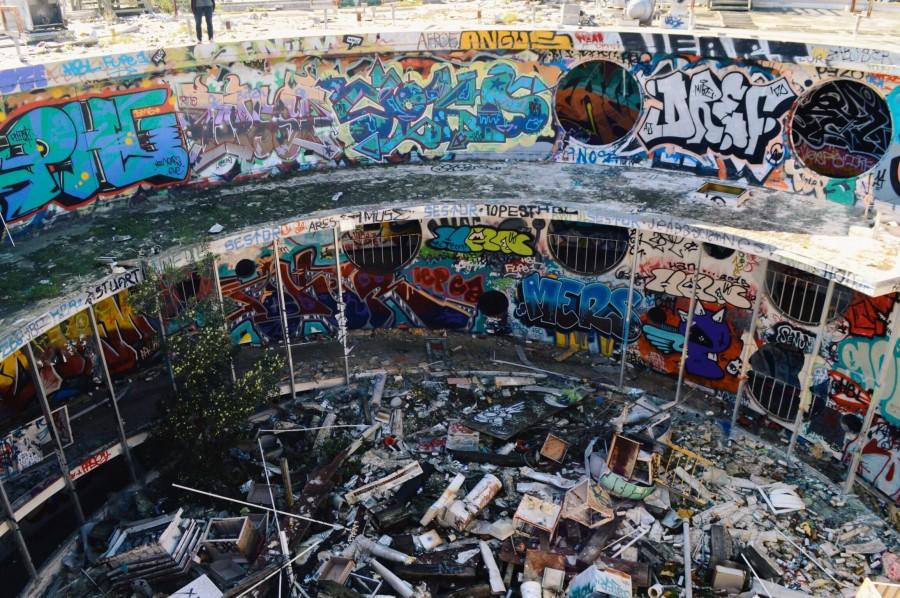SCHS senior finds inspiration in street art
Guy’s photograph of graffiti on Treasure Island in San Francisco.
It was a casual day in San Francisco as senior McKennan Guy stumbled across an abandoned military base called Treasure Island. Seeing the colorful graffiti from the outside, Guy found her way inside and was surrounded by darkness.
Walking past several doors and vacant rooms, she reached the top of the building, and looked around at her surroundings, which she described as a stadium of graffiti that changed her life forever.
Amazed by the unexpected experience, Guy dove into the world of graffiti art. She photographs it and creates some of her own by looking up letters and styles to practice in her black sketch book.
Guy’s sketches usually begin with a set of bubble letters. After that, she adds 3D effects and any other details she can think of to the art.
Commonly known as ‘street art’ or ‘wildstyle,’ graffiti art is much more than just scribbles: ranging from large colorful murals to small unique designs that represent the artist.
Keeping her graffiti art in her sketchbook only, Guy mostly likes to explore and witness other artist’s work.
I’ve witnessed it before, I’ve seen people live graffiti and it’s just so amazing you would never think that the finished product would look the way it does using only spray cans. It’s crazy!” Guy said.
Graffiti art has opened

Guy’s photograph of graffiti.
Guy up to many opportunities, such as meeting new people, selling her photography of graffiti art, and exploring places she never thought she would go to, such as abandoned buildings that were once schools, hospitals and military bases.
“I remember I took a five hour drive to Eureka, and saw this abandoned slaughterhouse and it was so amazing, every wall was covered in graffiti. It’s really something you need to see for yourself to be able to appreciate it,” Guy said.
However, many people see graffiti as vandalism and a rebellious act, because it is illegal to tag private property, said Guy.
In recent years, ‘legal walls’ have popped up in many places. Legal walls are property owners and even entire neighborhoods who allow people to put graffiti art on their property.
Art teacher, Neil Woodman said that he believes the stereotypes behind graffiti art are mostly correct because tagging walls without permission is vandalism. However also Woodman mentioned that many artists do ask permission and give owners clear plans of what they want to tag on their buildings.
Although bad stereotypes of graffiti exist, Guy says photographing graffiti art and creating it in her sketchbook still makes her happy, and gives her a rush because it gives her the opportunity to express herself.
“I’m a creative person, and art is important to me, so I make sure to make time for it because it’s something that I love to do,” Guy said.


